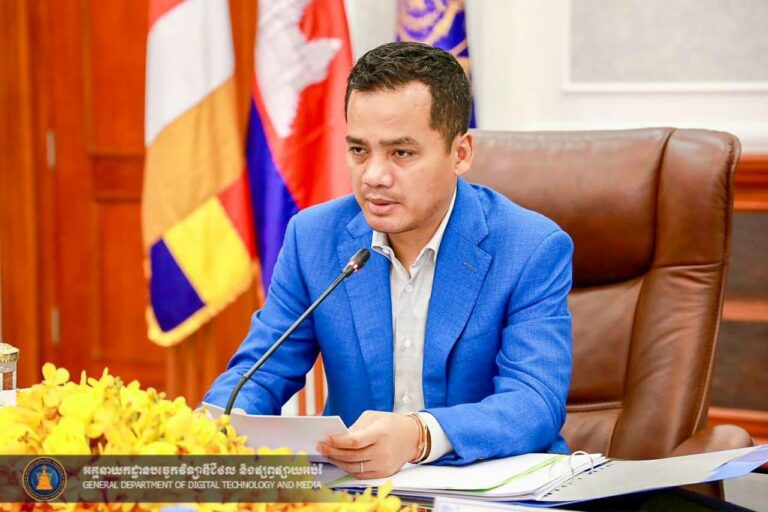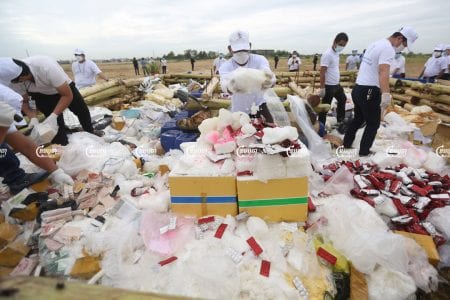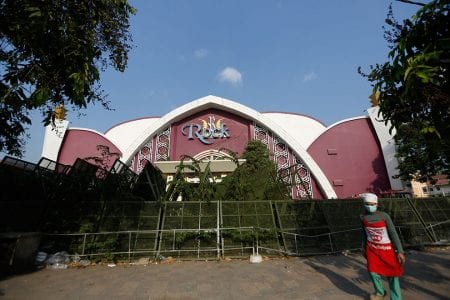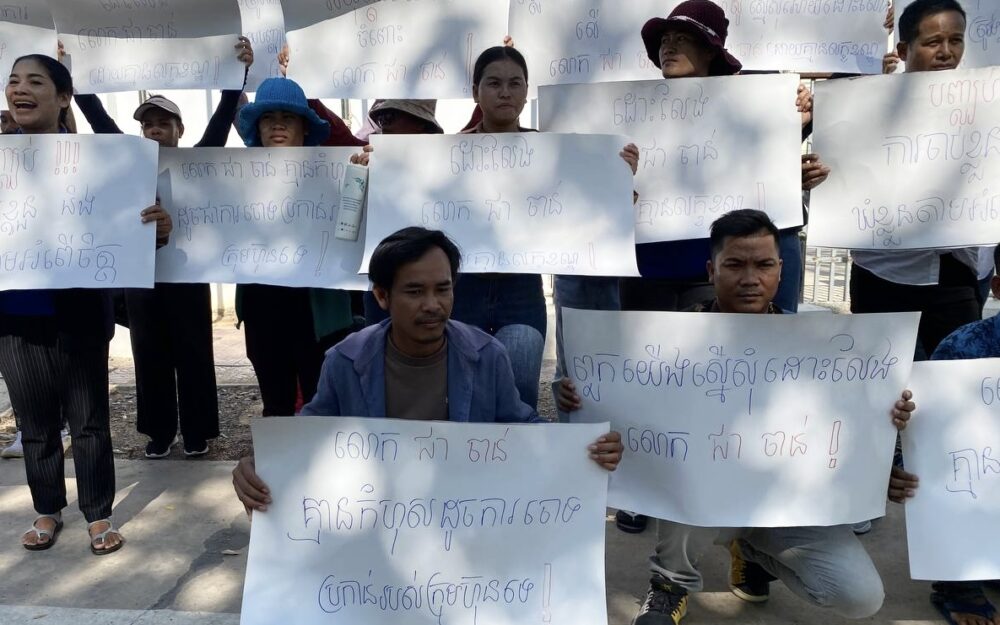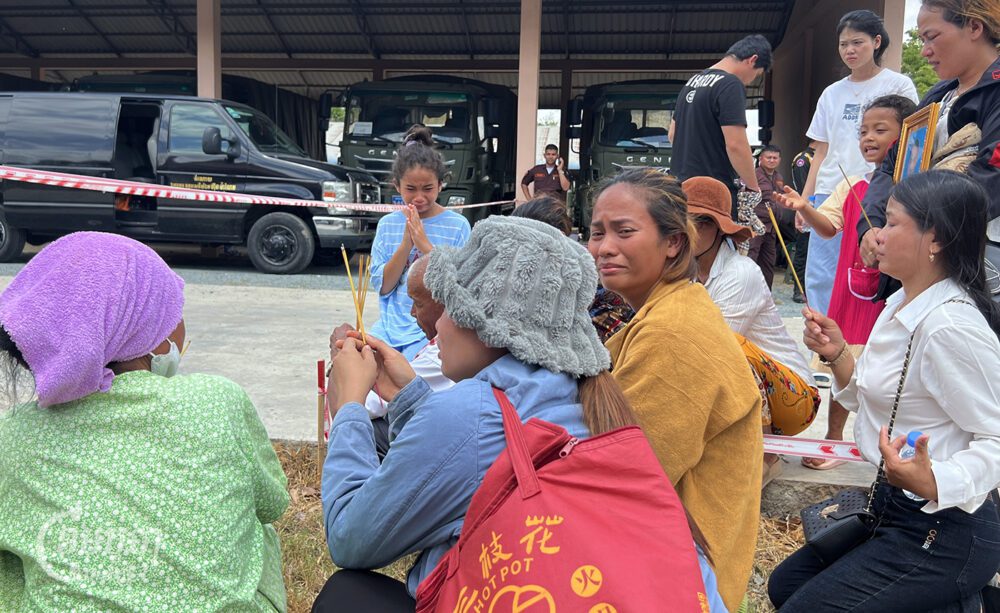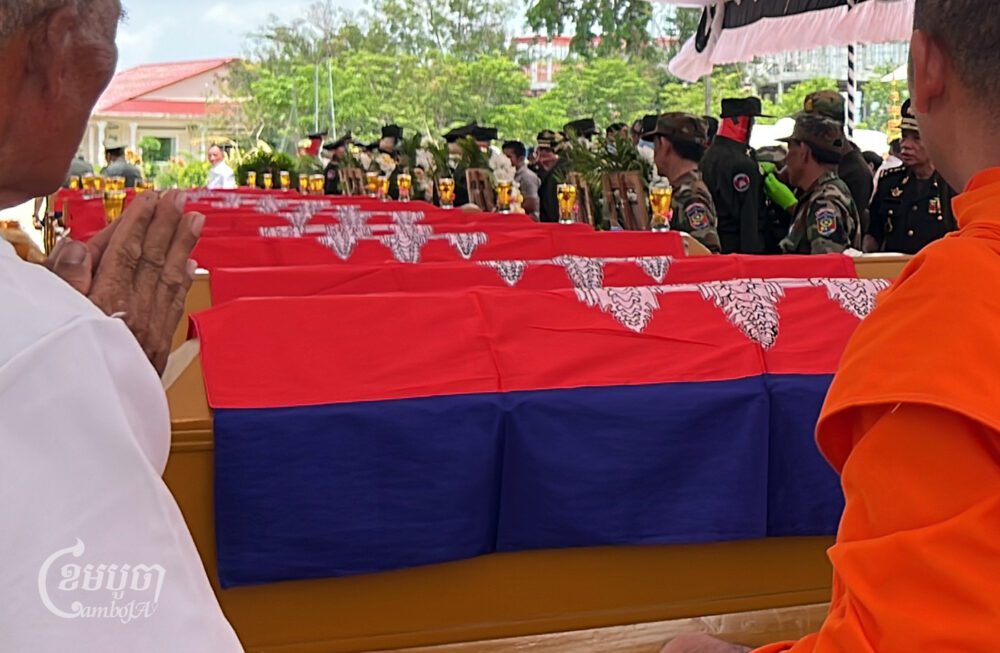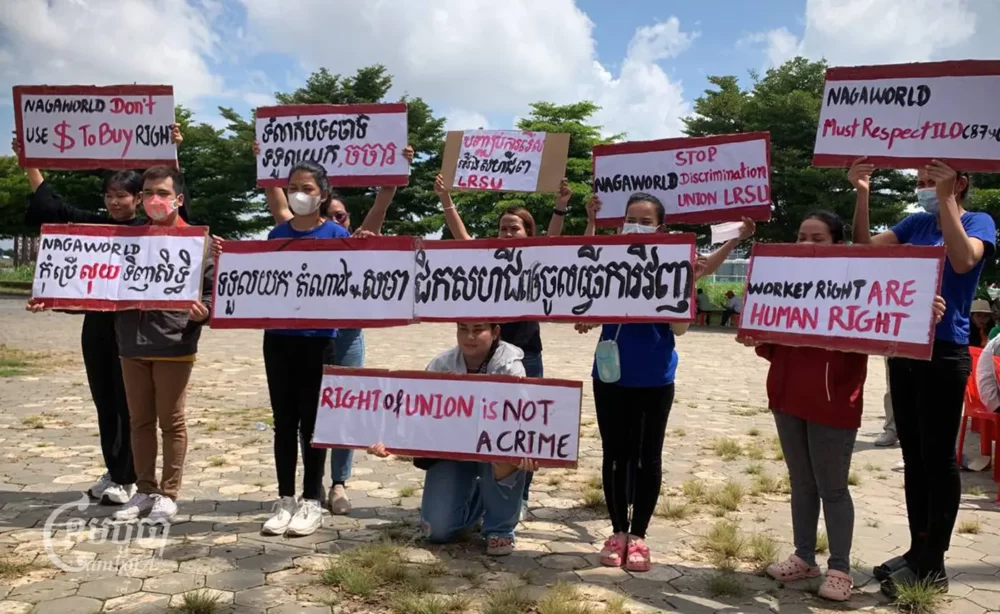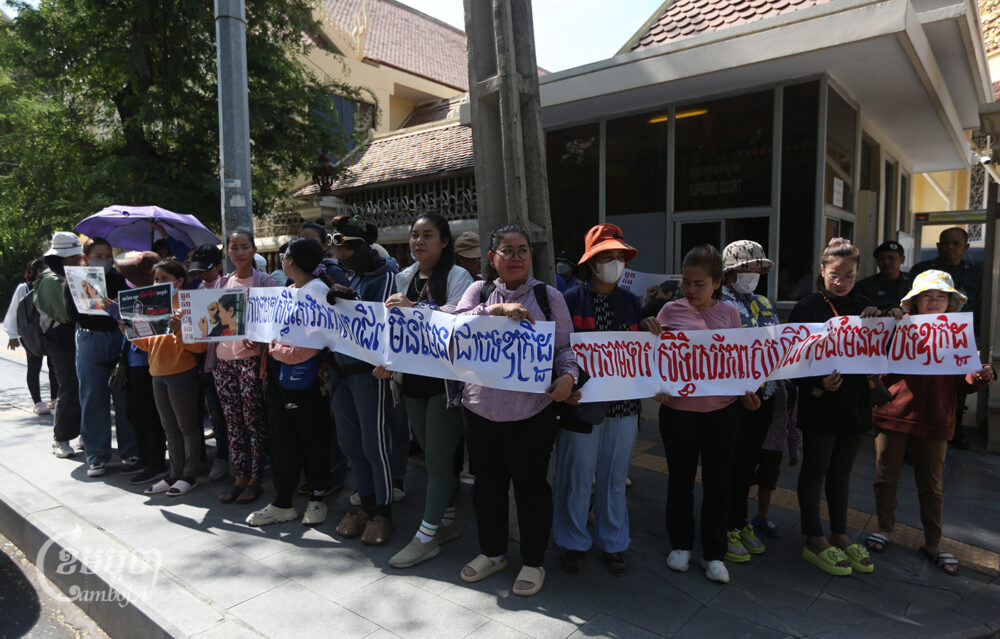With signs that Cambodia is on its way to becoming a drug-producing country, as well as a drug-transit country, officials and citizens alike say they are worried about the social impacts.
In mid-December 2021, a major large-scale domestic drug processing plant was uncovered in Kampong Speu province’s Oral district. Police said they seized more than 1.4 tons of ketamine and 80 tons of precursors, arresting 13 people and killing one Taiwanese national during a shootout. Cambodian and Chinese police reportedly jointly monitored the site for months, before making the raid.
The lab was inside the compound of an agricultural processing facility, and villagers living in the vicinity expressed concern.
Kheang Dom, 25, who worked for a mango processing factory located inside the facility, said he was unaware drugs were being processed in the same compound until the raid.
“First, they said that this was the footwear factory and many local people had applied for jobs, but they did not ever recruit workers,” he said.
“I used to come into the factory campus to clean and there was a smell like glue coming out from the factory, but I did not understand it was used for drug processing purposes. I saw they took many barrels into the factory,” he said.
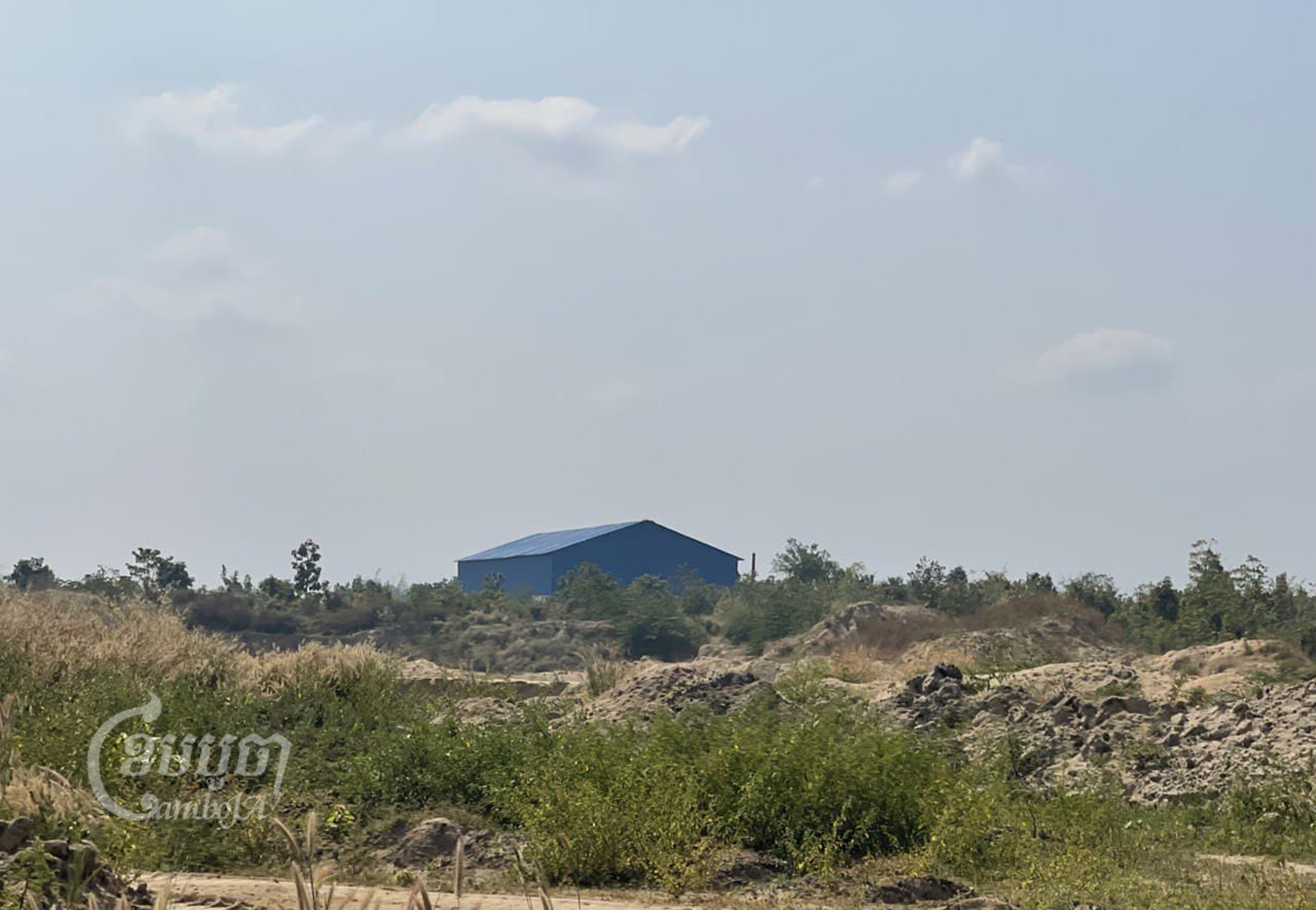
Deputy Chum Norb village chief Chea Ploy, 42, said villagers were previously allowed to move freely among the compound while commune authorities could also enter to check in case of improper storage of mango waste. However, three months before the raid, outsiders were banned from entering.
Leng Sok, 40, whose house is next to the factory used for drug production said that two months before the crackdown, he spotted odorous black crumbs discarded behind the factory.
“I know it was not mango waste, but I did not know what it was until the drugs were seized and then I understood that it was likely to be drug waste,” he said.
Lem Vueon, whose house is in front of the factory, said that around the same time she spotted Chinese workers arriving each day at midnight.
“We did not know anything until the police came and closed the factory. We never suspected,” she said. “I didn’t think that there was a huge drug production plant in my area and near my house. I am really upset.”
The raid revealed perhaps the largest domestic drug production facility, but recent crackdowns have also uncovered massive drug movement. In October, police arrested six men for trafficking and possessing over 200 kilograms of crystal meth in Koh Kong province. In late December, nine Chinese nationals were arrested in Phnom Penh for possessing and trafficking nearly 350 kg of methamphetamines.
Processing but not producing
The Kampong Speu plant — believed to have been run by Chinese nationals — drew the attention of Chinese authorities, who aided in the raid. Experts say that the influx of Chinese money in Cambodia has also come with an increase in illicit transnational trade, including drug smuggling and domestic processing.
A 2021 report issued by the Global Initiative Against Transnational Organized Crime suggests that China’s Belt and Road Initiative has been linked to increased risks of increased illicit trade, corruption, and crime, especially for weak economies such as Cambodia.
According to UNODC, Cambodia has become a major transit country for drug trafficking. On their website, UNODC notes that the “number of illicit drug users — particularly of amphetamine-type stimulants (ATS) — has grown sharply.”

Meas Vyrith, secretary general at the National Authorities for Combating Drug (NACD), told CamboJA that drug trafficking has increased during the pandemic, though he said it’s not yet accurate to term Cambodia a drug-production country. Rather, he said, a country where smaller scale “processing” takes place.
“We have not yet made that conclusion [that Cambodia produces drugs] because we have asserted that the country has synthetic drug processing,” he said. “We recognize that Cambodia is processing, not producing.”
Synthetic drugs — which are created with chemical precursors that can be harder to crack down on — are cheaper to produce and can be made virtually anywhere. That, said Vyrith, has made it difficult to stop the production and spread of drugs like methamphetamine, Ketamine, MDMA and more.
Cambodia’s location, which easily connects to the sea and the “Golden Triangle,” has made it a key transit country — spreading drugs domestically in turn.
“Drugs spread out to remote areas because the synthetic drugs are cheap, and people can easily buy them.”
Legal materials, illegal activities
In January, Minister of Interior Sar Kheng ordered authorities to increase their efforts to counter drug trafficking.
“There are hundreds of thousands of addictive substances that are legally imported to Cambodia, and recently we have found about 100 tons [used as drug precursors],” he said, referring to a seizure that took place in Phnom Penh last month.
“Who is responsible for importing addictive substances?” he asked. “I think we have to find someone who is responsible”

Kheng noted that many of the substances used to produce drugs are ostensibly legally imported as chemicals for use in agriculture, industry, and healthcare. He urged relevant authorities to thoroughly inspect any substance that could be used as a drug precursor.
The rise in domestic drug production and trafficking has led to a rise in drug crimes among minors. He noted that in 2021, there were 1,422 underage youths arrested, and most cases related to drugs.
According to Kheng, Cambodian authorities carried out a total of 6,308 cases involving illicit drug trafficking, arresting 13,979 people in 2021. Of those arrested, 34 were involved in drug processing. He said that during 2021, authorities seized 4.68 tons of drugs and 84 tons of precursor chemicals.
Concern as drugs spread to rural areas
Long before the crackdown on the Kampong Speu plant, drugs have been widely trafficked across the country — even in remote communities.
Vueon, who lives by the production plant, noted that her own brother-in-law was addicted to drugs, and said a number of distributors have been arrested in her village.
“I did not know when the drugs were distributed in the village and where they got the drugs from, but I just know that police arrested more distributors in 2021,” she said.

San Chey, executive director of the Affiliated Network for Social Accountability, said the apparent growth in domestic drug production and movement suggested the government lacks comprehensive strategies to fight against drugs.
“It has been spreading into remote rural communities,” he said. “Both drug users and drug trafficking has grown sharply and people report that drug trafficking in their communities remains high.”
The government should establish mutual accountability mechanisms to engage communities and authorities to jointly tackle illicit activity, said Chey. But he cautioned that corruption made it difficult to fully address the problem.
“Drugs are a complicated issue due to the lack of manageable systems in the fight against trafficking,” he said. “This has involved the abuse of power by law enforcement officials, which is a form of serious corruption,” he said.
Pech Pisey, executive director of Transparency International Cambodia, said drug-related crimes often involve corruption. Unless authorities work to eradicate corruption, it’s unlikely drugs will disappear from Cambodia anytime soon.
“When it comes to drug trafficking, they cannot do it alone, and it is done in a systematic way,” he said.
“If there is drug trafficking even in rural communities, it means that the scale of corruption among relevant authorities is huge.”
Drug rehabilitation
With the rise in drug production and trafficking, there has been a rise in drug use as well. According to NACD, Cambodia now has 19 drug rehabilitation centers — 10 of them are state-run, four are private, and five are run by NGOs.
While state-run centers have come under fire by rights groups for illegal detention and physical abuse, private centers have grown increasingly popular with families and individuals seeking treatment.
Hang Braser, vice president of Drug Addict Relief Treatment Education Training Association, a privately operated rehab center said that despite the seemingly large raids, there’s little sign of a decrease in drug activity.
“We have seen a large-scale of cracking down on drugs, although it isn’t leading to a decrease [in drug availability],” he said.

Those coming into Braser’s center for treatment show the extent of the problem — with patients increasingly coming from rural areas.
Tola, 37, from Prey Veng province’s Neak Loeung commune, used drugs for about a decade before receiving treatment at the center starting in 2017. He said that the drug trafficking in his community has been increasing in recent years.
“The drug distribution in my community continues to increase, especially during COVID-19,” he said.




